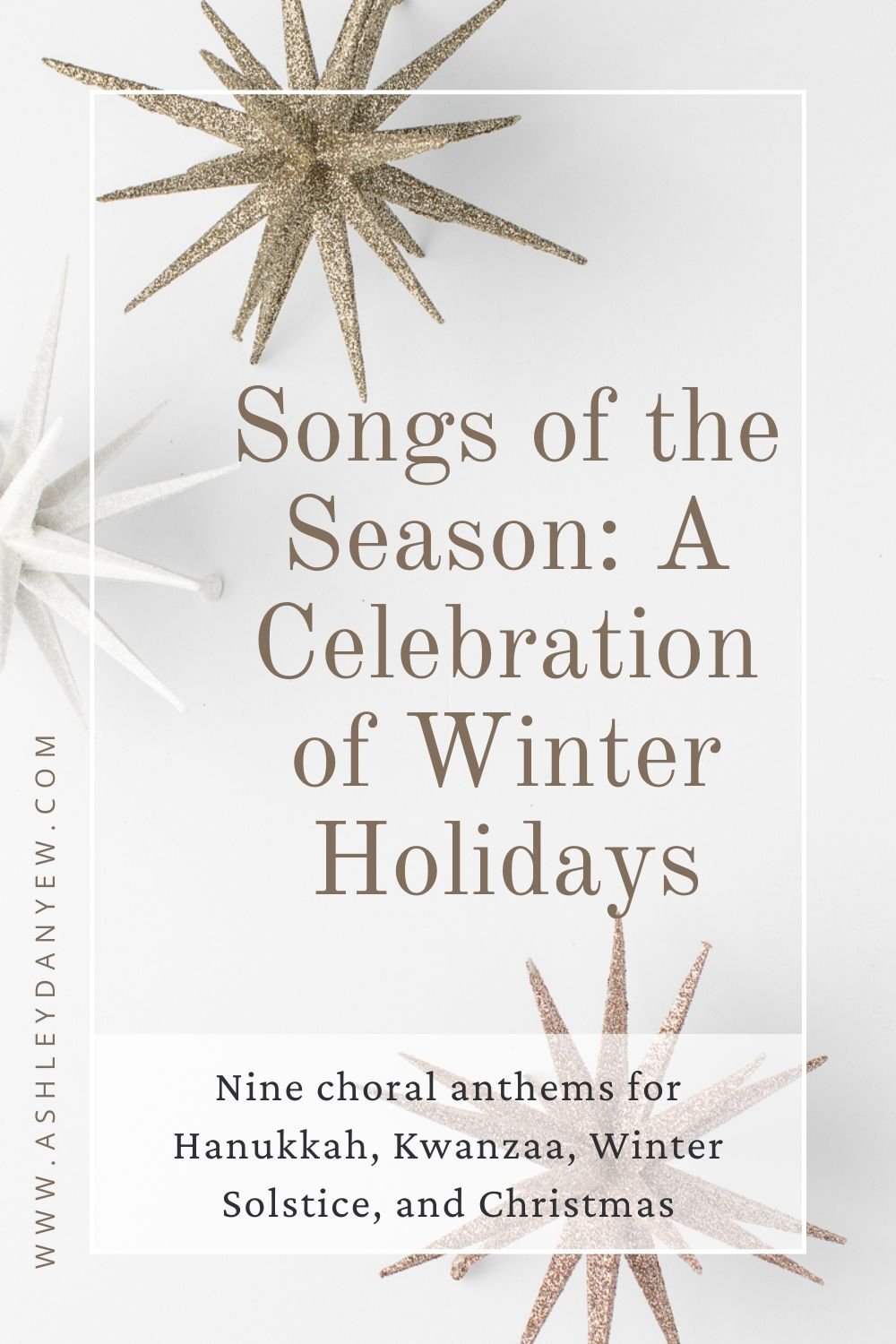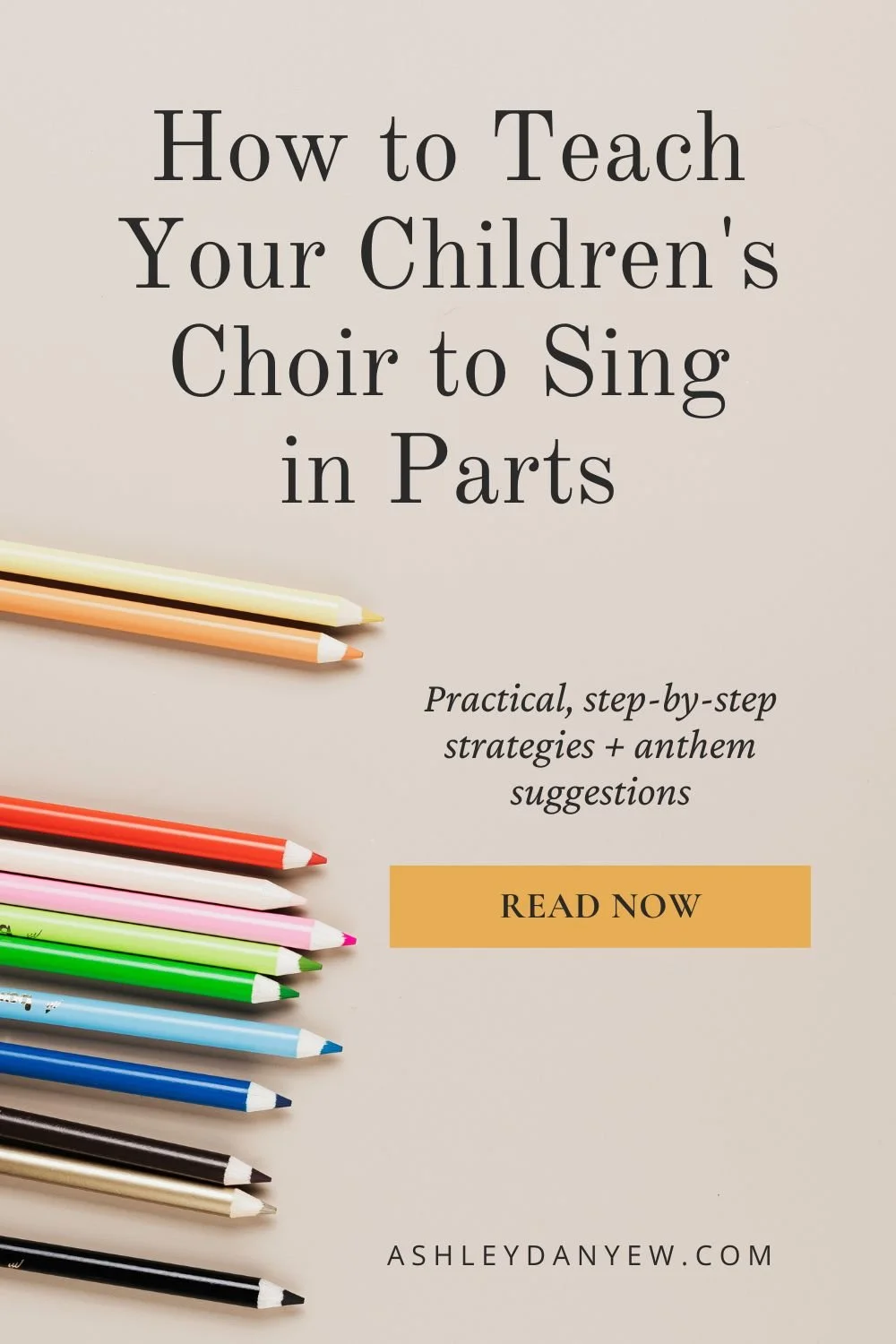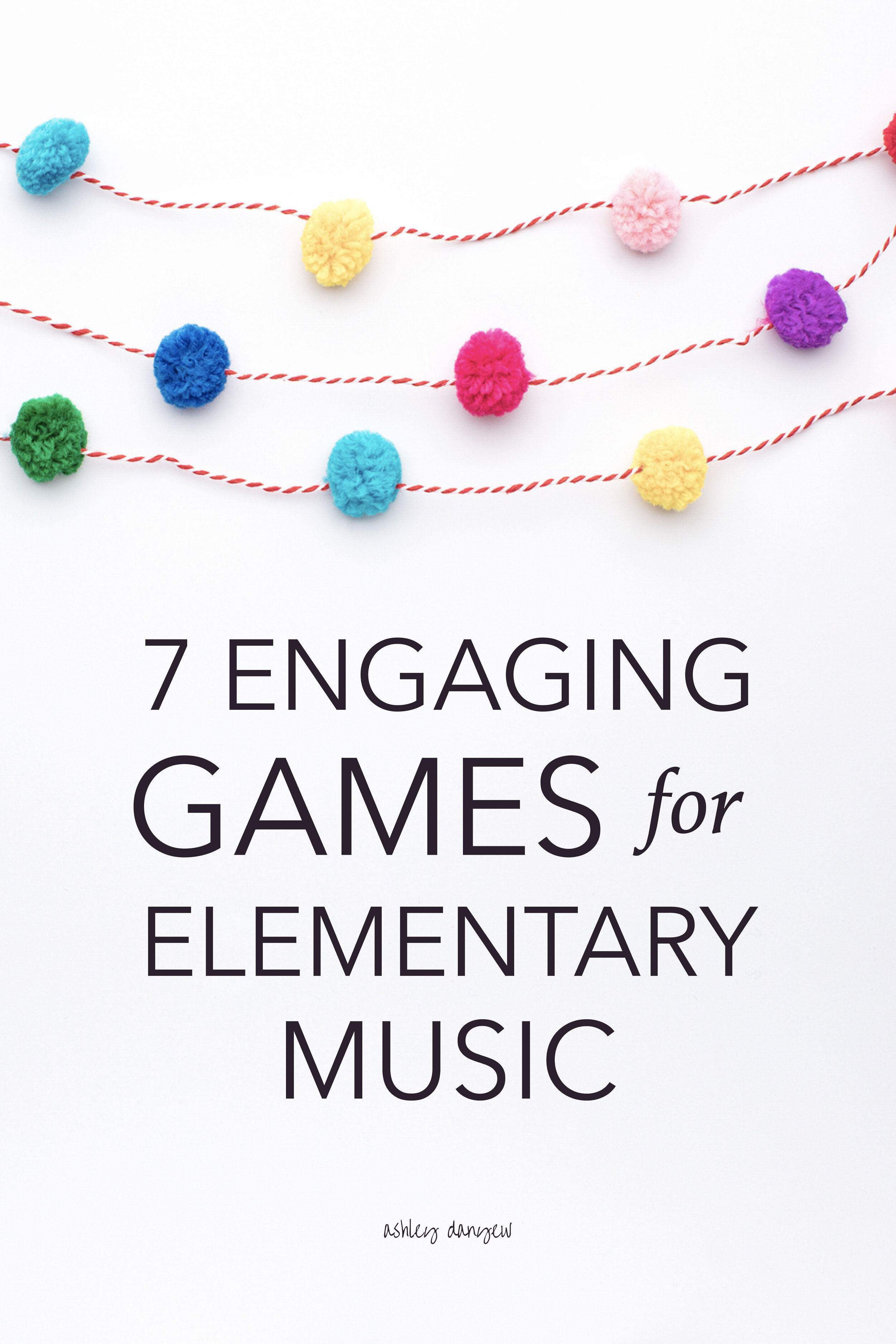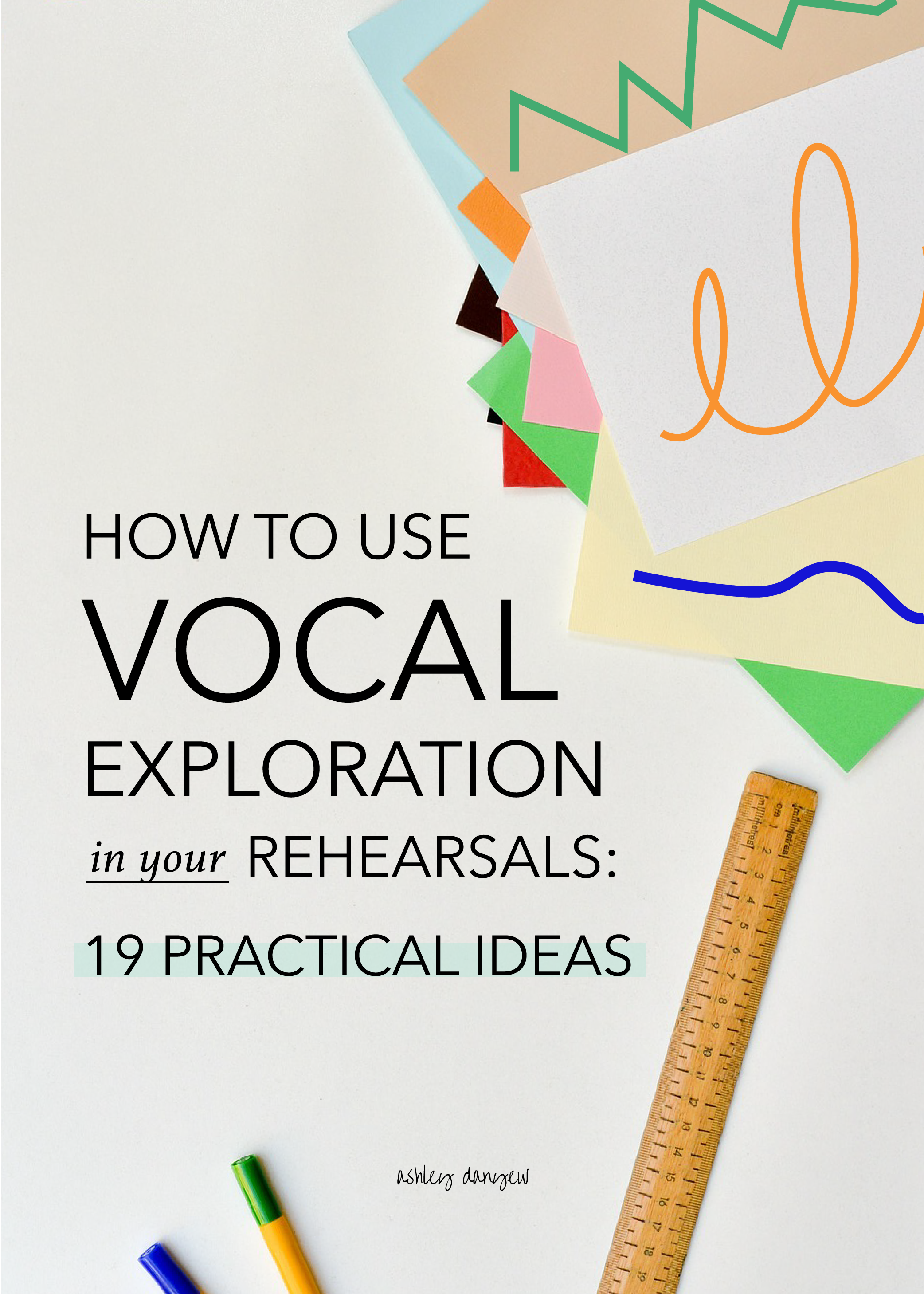What does it take to direct a preschool choir?
How is working with preschoolers different from working with elementary-age children? What do you need to know?
If you’re new to working with preschoolers or it’s been a while since you’ve been around this particular age group, here’s a quick guide to what it looks like to teach and direct a preschool choir.
I’m tailoring this to preschool choirs in church settings, but much of what I will describe here is applicable to preschool choirs in school and community settings, as well, and even music-making at home.
*Disclosure: I get commissions for purchases made through links in this post.
How Preschoolers Learn
To understand teaching, we must understand how children learn, right? In preschool, children learn primarily through play activities and experimenting. They're learning about numbers, shapes, colors, and letters of the alphabet. They’re also learning social skills and how to interact, play, and share with others.
Preschoolers approach music in the same way they approach other aspects of learning: through exploration and discovery. They love to sing, dance, play, move, and experience music with their whole selves.
When it comes to teaching a preschool choir, there are five main components of musical experience to consider:
Singing
Chanting
Playing
Moving
Listening
Let's go into a little more detail about what each one of these entails.
Musical Experiences for Preschoolers
Singing
Use lots of vocal exploration activities, letting children explore and discover what their voices can do and all the different sounds they can create. Incorporate a favorite story they can sing (see my recommendations here) to help children engage with the music in a new way.
Children at this age aren’t reading yet, so make sure to choose music that is simple (not too many words) and can be easily taught by rote. Use hand and body motions to help bring the music to life and make the words more memorable (I’ll talk more about this below).
Related posts:
How to Develop Children’s Singing Voices in Choir
How to Teach a Song or Anthem by Rote
Chanting
Use rhymes, finger plays (with puppets!), rhythmic chants, and rhyming stories to help children experience rhythm and steady beat. Language has a natural rhythm to it, so use songs and rhymes they know to reinforce their musical development. See my recommendations in this post: Books You Can Sing or Chant With Your Children’s Choir.
Playing
Use rhythm instruments as a way for children to engage in musical play. Demonstrate how to hold and play the instrument, and how to rest (usually on the ground or on their shoulders). Try adding instruments like jingle bells, shakers, or handbells for a certain section of a song they're singing or use instruments for a musical story-telling activity, paired with a favorite book.
One quick tip: pass out instruments at the very last minute, after explaining what the instrument is and how it will be used in the activity. Also, make a plan for collecting the instruments as soon as you’re done with the activity, before things get out of control. Consider singing a song as you pass out the instruments and pick them up again to help with this transition.
Related post:
Sing & Play: How to Use Instruments with Your Children’s Choir
How to Start a Children’s Handbell Choir
Moving
Movement is key to exploring and discovering new things and it also helps young singers remember what they are learning and experiencing, so be sure to include times to move around the room and feel what rhythm and music is like with their whole selves.
Incorporate lots of activities that reinforce steady beat (walking, stepping, marching, clapping, tapping). Play a recording of a new song, or use an instrumental track and give them some guided directions for how to move, based on what’s happening (Can you make your feet march like the steady beat? Can you draw rainbows in the sky with your finger, like the shape of this song? How does this song make you feel? Act it out.).
Related post:
10 Movement Activities for Children’s Choir
Use hand and body motions that match the words they're singing to help connect movement and music, keep them engaged, and help make the music (and the words) more memorable. Here’s an example of what this might look like:
Jesus loves me (cross arms across chest)
this I know (point to side of head)
for the Bible tells me so (open hands like book)
little ones to him belong (arms out by sides)
they are weak (pretend to wilt, like a flower)
but he is strong (hold up arms to show muscles)
Yes, Jesus loves me (nod and cross arms across chest)
Yes, Jesus loves me (nod and cross arms across chest)
Yes, Jesus loves me (nod and cross arms across chest)
Yes, Jesus loves me (nod and cross arms across chest)
the Bible tells me so (open hands like book)
Incorporate movement at the beginning of your rehearsal, in the middle when they need to exert some energy, and again at the end.
Listening
Give children lots of opportunities to hear and listen to music (while moving and engaging with it, somehow). Incorporate lots of opportunities to experience musical contrasts: fast vs. slow, high vs. low, soft vs. loud, short vs. long. See if they can begin to recognize same vs. different.
Use props (beanie babies, balls, stuffed animals, other objects mentioned in the song you're singing) and visual aids (picture cards, charts, shapes, colors) as much as you can to help them grasp these aural concepts. These don’t have to be complex - simple colored shapes (circle, triangle, square) to show different sections of a song, or pictures of things they’re singing about will help them follow along and visualize the music.
Use a parachute to help children learn about steady beat (bounce the parachute up and down to match the beat of the music), or musical form (walk in a circle during one section, then walk into the middle and out during a contrasting section).
For a specific list of musical skills and concepts that are appropriate to introduce and teach to preschool choirs, see this post: What to Teach When in Children's Choir: Preschool.
Want a ready-to-use video curriculum you can use with your preschoolers at home or in a group setting?
My friend Kathryn of Musik at Home is hosting an amazing giveaway this week:
Enter to win a one-year membership to Family Music for Ages 4-7 (including 9 video classes, CDs, and all class materials) - a $345 value!
Plus, everyone who enters gets a free 20-page sound exploration workbook - a great way to introduce rhythm and graphic notation to your preschool-age children!
No purchase necessary. Giveaway ends Saturday, 10/27/18.
How to Plan the Choir Year
Just like with younger- and older-elementary choirs, I recommend starting with a big-picture plan for your choir year. Choose an overall theme - a framework to guide your planning - and choose songs, games, stories, books, and other activities that tie in.
Related post:
How to Write Your Own Children’s Choir Curriculum
For example, let’s say your theme for the year is “All Creatures Great and Small,” based on the line from the hymn, “All Things Bright and Beautiful.”
Choose music and activities related to animals (e.g. vocal exploration activities like: “Can you hoot like an owl? Can you sound like a monkey?” or a movement activity: “Can you step the big beat, like an elephant might do?” “Can you hop with the little beat, like a bunny might do?”) and stories and activities related to God’s creation (e.g. reading the Creation story as a devotion, or focusing on one day of creation each week for 7 weeks).
Once you have a theme or guiding framework in place, you can go into the details of week-to-week rehearsal-planning.
How to Plan a Preschool Choir Rehearsal
Most preschool choirs have a midweek rehearsal during part of the year. Twenty to thirty minutes is usually a good length.
Include a variety of different songs, games, and activities, with many familiar elements, so the children know what to expect each week. Strive for a mix of songs where they're up moving around, and a few times when they're sitting quietly on the floor for a quick devotion, story, or prayer.
Here’s a basic outline for what your rehearsal might look like:
Welcome song with hand motions
Silly sounds / vocal exploration (echo patterns with slide whistle, or making sounds that match a picture or shape)
Familiar song with movement
Rhythmic chant with visuals
Story / intro to new song
New song with movement
Rhythmic chant with visuals (book, hand signs, or poster)
Devotion (story, activity, prayer)
Familiar song that ties in with devotion
Familiar song with hand motions or instruments (shakers, jingle bells, colored handbells)
Goodbye / prayer song with hand motions
Related Posts:
How to Create a Seamless, Joyful Experience for Your Preschool Choir
12 Practical Transition Songs to Teach to Your Children’s Choir
A Few Helpful Tips
Leave time to play.
Remember, children at this age learn through play and exploration, so try to think of ways they can experience and learn about music through interactions that feel like play.
Keep it moving.
Keep transition times in between things as short as possible and try to keep them actively engaged in something (singing, playing, moving, chanting, listening) as much as possible. Segue right from one thing into the next, without taking too much time to give spoken directions.
Help them discover new things.
Ask questions about what they hear or see or experience (“Was this song fast or slow? Was it quiet or loud? Was this part the same or different?”). Give them opportunities to manipulate visuals like pattern or shape cards and experiment for themselves. Ask what they know about the things God created in the world or how to pray or how music makes them feel.
Choir is an important musical and spiritual learning experience for children at this age, so make sure to include opportunities to think about and reflect on what they are experiencing together.
Do you teach a preschool choir? If so, what are your best tips for new directors?
P.S. Don’t forget to enter the Musik at Home giveaway!
Win a one-year membership to Family Music for Ages 4-7, including 9 video classes and all class materials, and get a free 20-page sound exploration workbook just for entering.







































